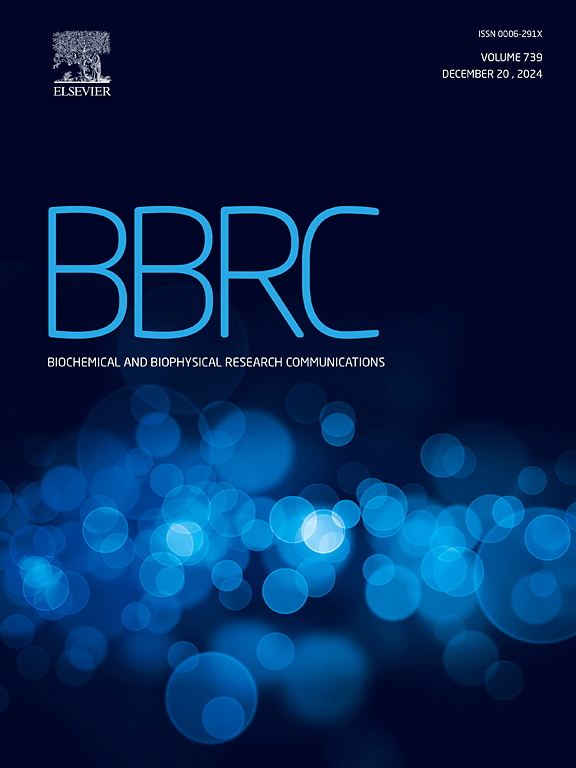Revolutionizing cotton cultivation: A comprehensive review of genome editing technologies and their impact on breeding and production
IF 2.2
3区 生物学
Q3 BIOCHEMISTRY & MOLECULAR BIOLOGY
Biochemical and biophysical research communications
Pub Date : 2025-01-01
DOI:10.1016/j.bbrc.2024.151084
引用次数: 0
Abstract
Cotton (Gossypium hirsutum L.), a vital global cash crop, significantly impacts both the agricultural and industrial sectors, providing essential fiber for textiles and valuable byproducts such as cottonseed oil and animal feed. The cultivation of cotton supports millions of livelihoods worldwide, particularly in developing regions, making it a cornerstone of rural economies. Despite its importance, cotton production faces numerous challenges, including biotic stresses from pests and diseases, and abiotic stresses like drought, salinity, and extreme temperatures. These challenges necessitate innovative solutions to ensure sustainable production. Genome editing technologies, particularly CRISPR/Cas9, have revolutionized cotton breeding by enabling precise genetic modifications. These advancements hold promise for developing cotton varieties with enhanced resistance to pests, diseases, and environmental stresses. Early genome editing tools like ZFNs and TALENs paved the way for more precise modifications but were limited by complexity and cost. The introduction of CRISPR/Cas-based technology with its simplicity and efficiency, has dramatically transformed the field, making it the preferred tool for genome editing in crops. Improved version of the technology like CRISPR/Cas12a, CRISPR/Cas13, base and prime editing, developed from CRISPR/Cas systems, provide additional tools with distinct mechanisms, further expanding their potential applications in crop improvement. This comprehensive review explores the impact of genome editing on cotton breeding and production. It discusses the technical challenges, including off-target effects and delivery methods for genome editing components, and highlights ongoing research efforts to overcome these hurdles. The review underscores the potential of genome editing technologies to revolutionize cotton cultivation, enhancing yield, quality, and resilience, ultimately contributing to a sustainable future for the cotton industry.
棉花种植革命:基因组编辑技术及其对育种和生产的影响的综合综述。
棉花(Gossypium hirsutum L.)是一种重要的全球经济作物,对农业和工业部门都有重大影响,为纺织品提供必要的纤维和有价值的副产品,如棉籽油和动物饲料。棉花种植支撑着全世界数百万人的生计,特别是在发展中地区,使其成为农村经济的基石。尽管它很重要,但棉花生产面临着许多挑战,包括病虫害带来的生物压力,以及干旱、盐度和极端温度等非生物压力。这些挑战需要创新的解决方案来确保可持续生产。基因组编辑技术,特别是CRISPR/Cas9,通过实现精确的基因修饰,彻底改变了棉花育种。这些进步为培育对病虫害和环境胁迫具有更强抵抗力的棉花品种带来了希望。早期的基因组编辑工具,如zfn和TALENs,为更精确的修改铺平了道路,但受到复杂性和成本的限制。基于CRISPR/ cas技术的引入,以其简单和高效,极大地改变了这一领域,使其成为作物基因组编辑的首选工具。从CRISPR/Cas系统发展而来的CRISPR/Cas12a、CRISPR/Cas13、碱基和引物编辑等技术的改进版本,提供了具有不同机制的额外工具,进一步扩大了它们在作物改良中的潜在应用。这篇综述探讨了基因组编辑对棉花育种和生产的影响。它讨论了技术挑战,包括脱靶效应和基因组编辑组件的递送方法,并强调了正在进行的克服这些障碍的研究工作。这篇综述强调了基因组编辑技术在彻底改变棉花种植、提高产量、质量和抗逆性方面的潜力,最终为棉花产业的可持续未来做出贡献。
本文章由计算机程序翻译,如有差异,请以英文原文为准。
求助全文
约1分钟内获得全文
求助全文
来源期刊
CiteScore
6.10
自引率
0.00%
发文量
1400
审稿时长
14 days
期刊介绍:
Biochemical and Biophysical Research Communications is the premier international journal devoted to the very rapid dissemination of timely and significant experimental results in diverse fields of biological research. The development of the "Breakthroughs and Views" section brings the minireview format to the journal, and issues often contain collections of special interest manuscripts. BBRC is published weekly (52 issues/year).Research Areas now include: Biochemistry; biophysics; cell biology; developmental biology; immunology
; molecular biology; neurobiology; plant biology and proteomics

 求助内容:
求助内容: 应助结果提醒方式:
应助结果提醒方式:


